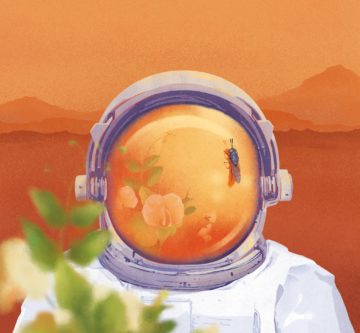Sarah Scoles in The New York Times:
 At first it was just one flower, but Emmanuel Mendoza, an undergraduate student at Texas A&M University, had worked hard to help it bloom. When this five-petaled thing burst forth from his English pea plant collection in late October, and then more flowers and even pea pods followed, he could also see, a little better, the future it might foretell on another world millions of miles from Earth. These weren’t just any pea plants. Some were grown in soil meant to mimic Mars’s inhospitable regolith, the mixture of grainy, eroded rocks and minerals that covers the planet’s surface. To that simulated regolith, Mr. Mendoza had added fertilizer called frass — the waste left after black soldier fly larvae are finished eating and digesting. Essentially, bug manure.
At first it was just one flower, but Emmanuel Mendoza, an undergraduate student at Texas A&M University, had worked hard to help it bloom. When this five-petaled thing burst forth from his English pea plant collection in late October, and then more flowers and even pea pods followed, he could also see, a little better, the future it might foretell on another world millions of miles from Earth. These weren’t just any pea plants. Some were grown in soil meant to mimic Mars’s inhospitable regolith, the mixture of grainy, eroded rocks and minerals that covers the planet’s surface. To that simulated regolith, Mr. Mendoza had added fertilizer called frass — the waste left after black soldier fly larvae are finished eating and digesting. Essentially, bug manure.
The goal for Mr. Mendoza and his collaborators was to investigate whether frass and the bugs that created it might someday help astronauts grow food and manage waste on Mars. Black soldier fly larvae could consume astronauts’ organic waste and process it into frass, which could be used as fertilizer to coax plants out of alien soil. Humans could eat the plants, and even food made from the larvae, producing more waste for the cycle to continue. While that might not ultimately be the way astronauts grow food on Mars, they will have to grow food. “We can’t take everything with us,” said Lisa Carnell, director for NASA’s Biological and Physical Sciences Division.
More here.
